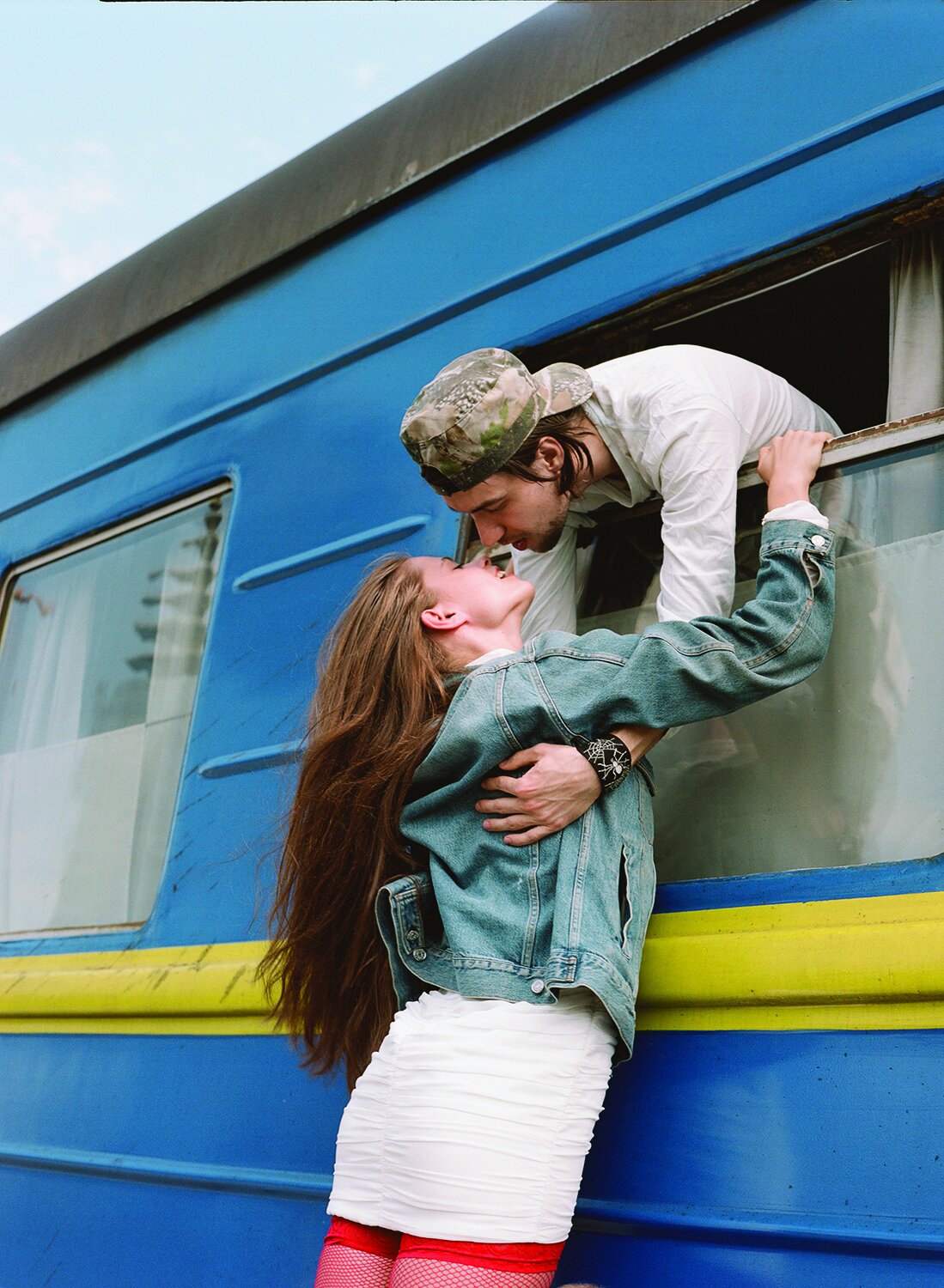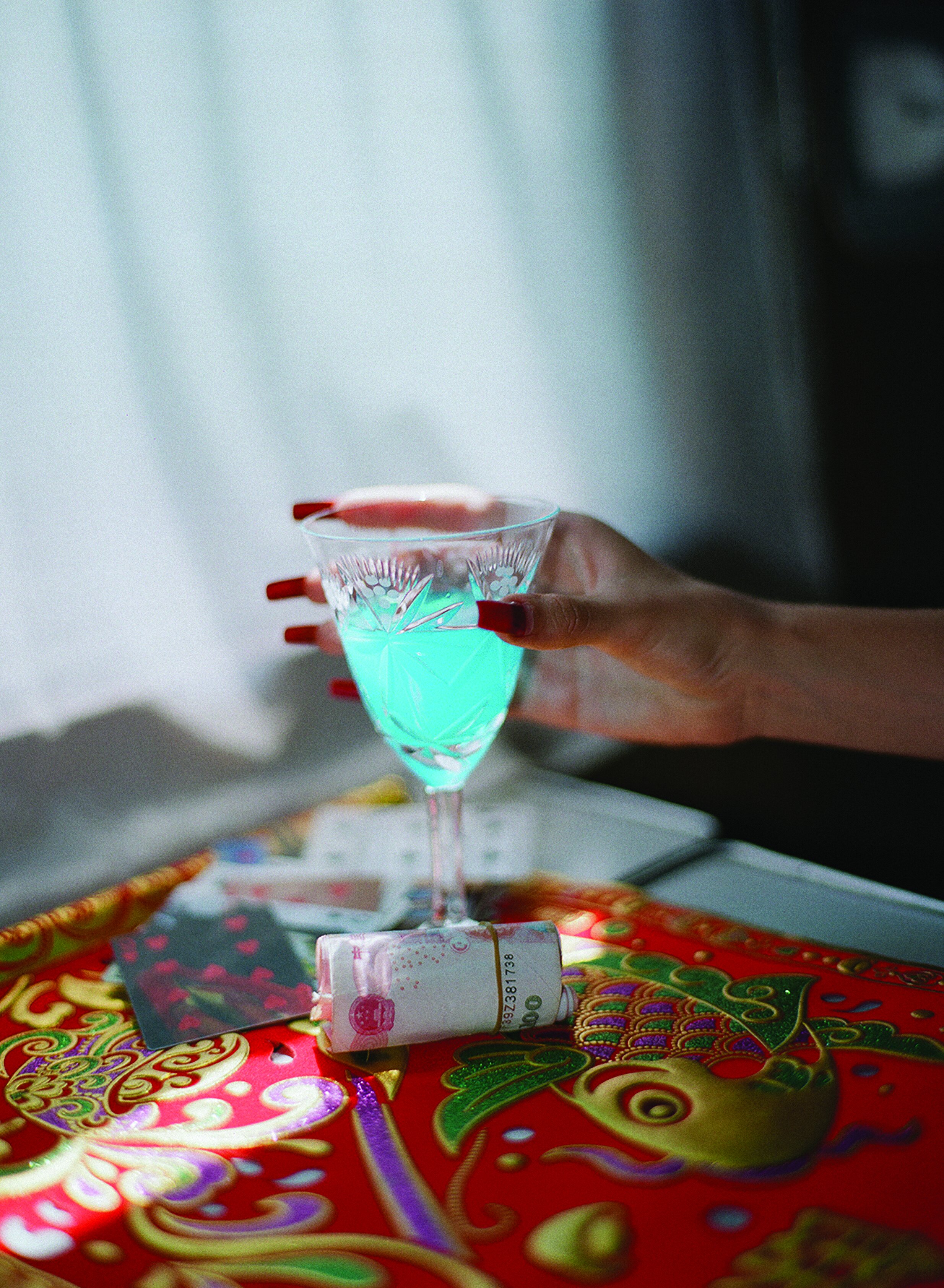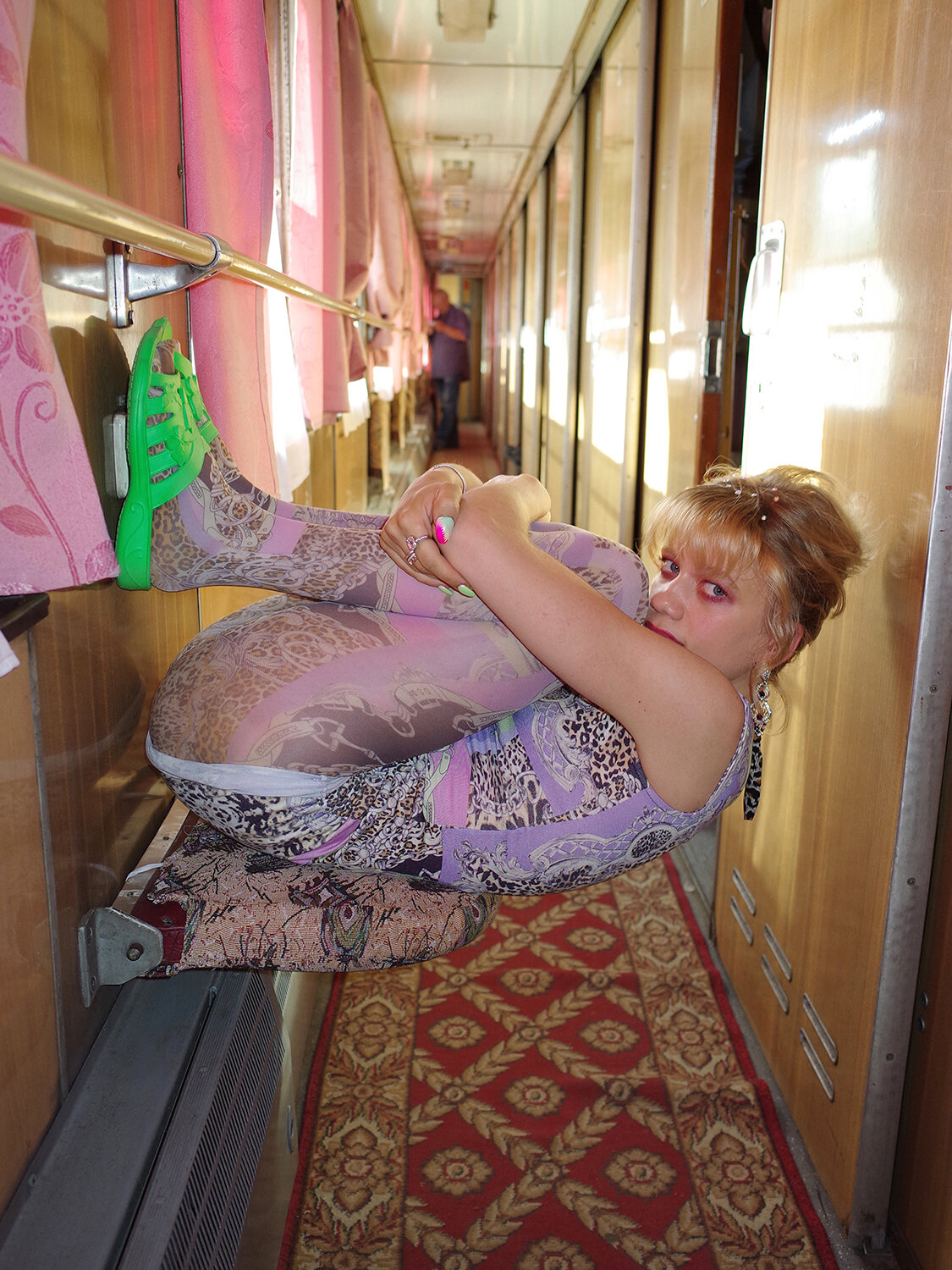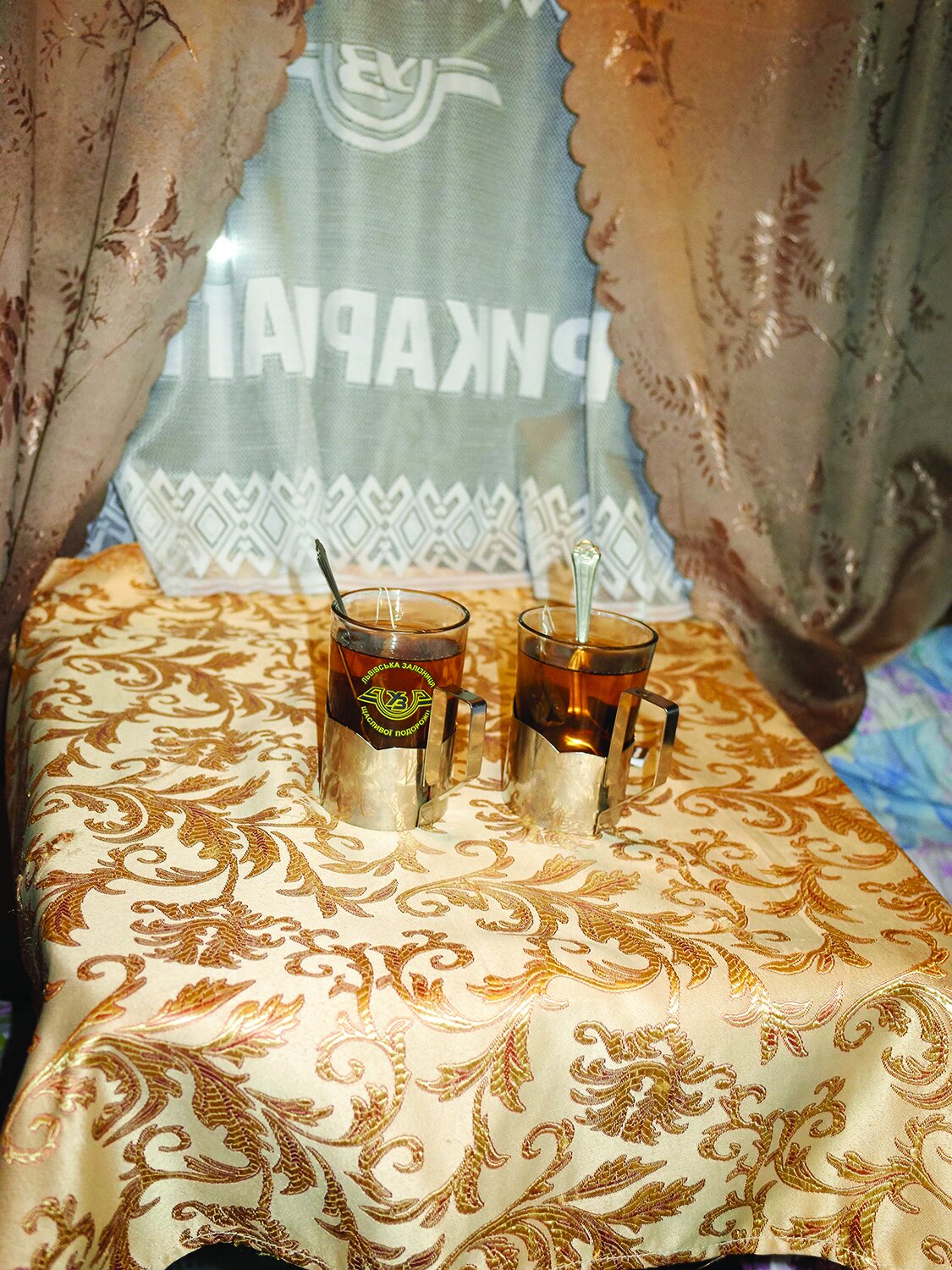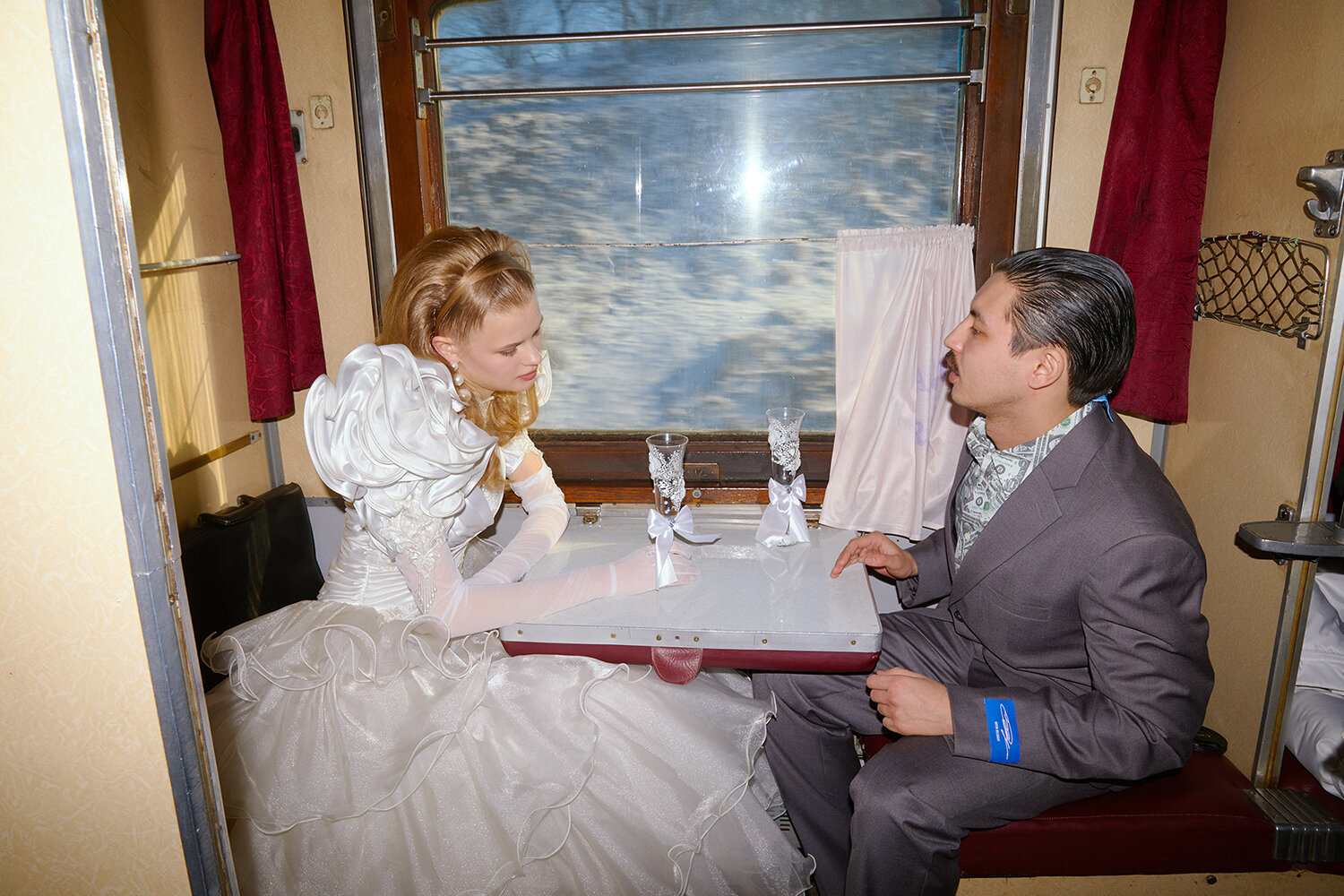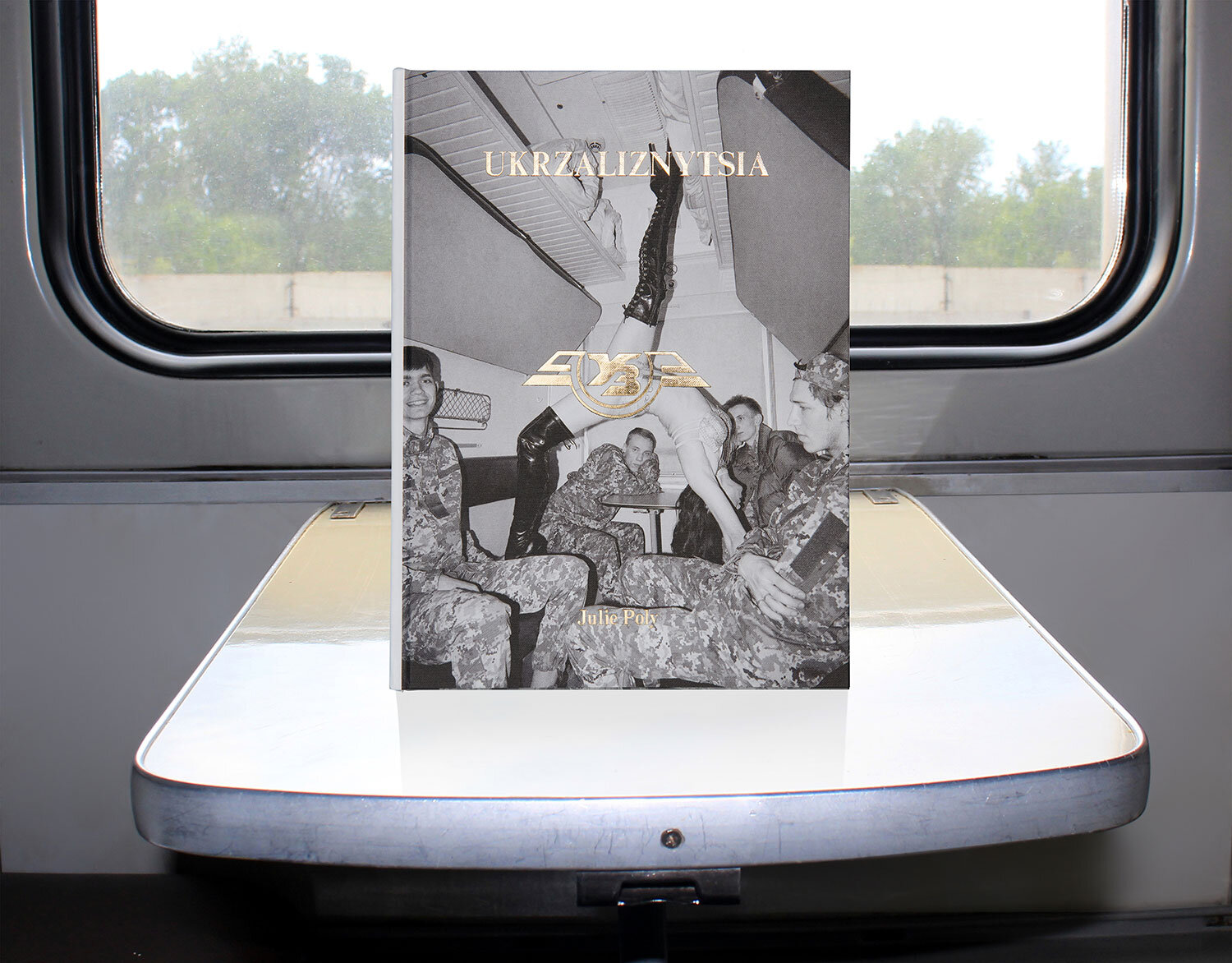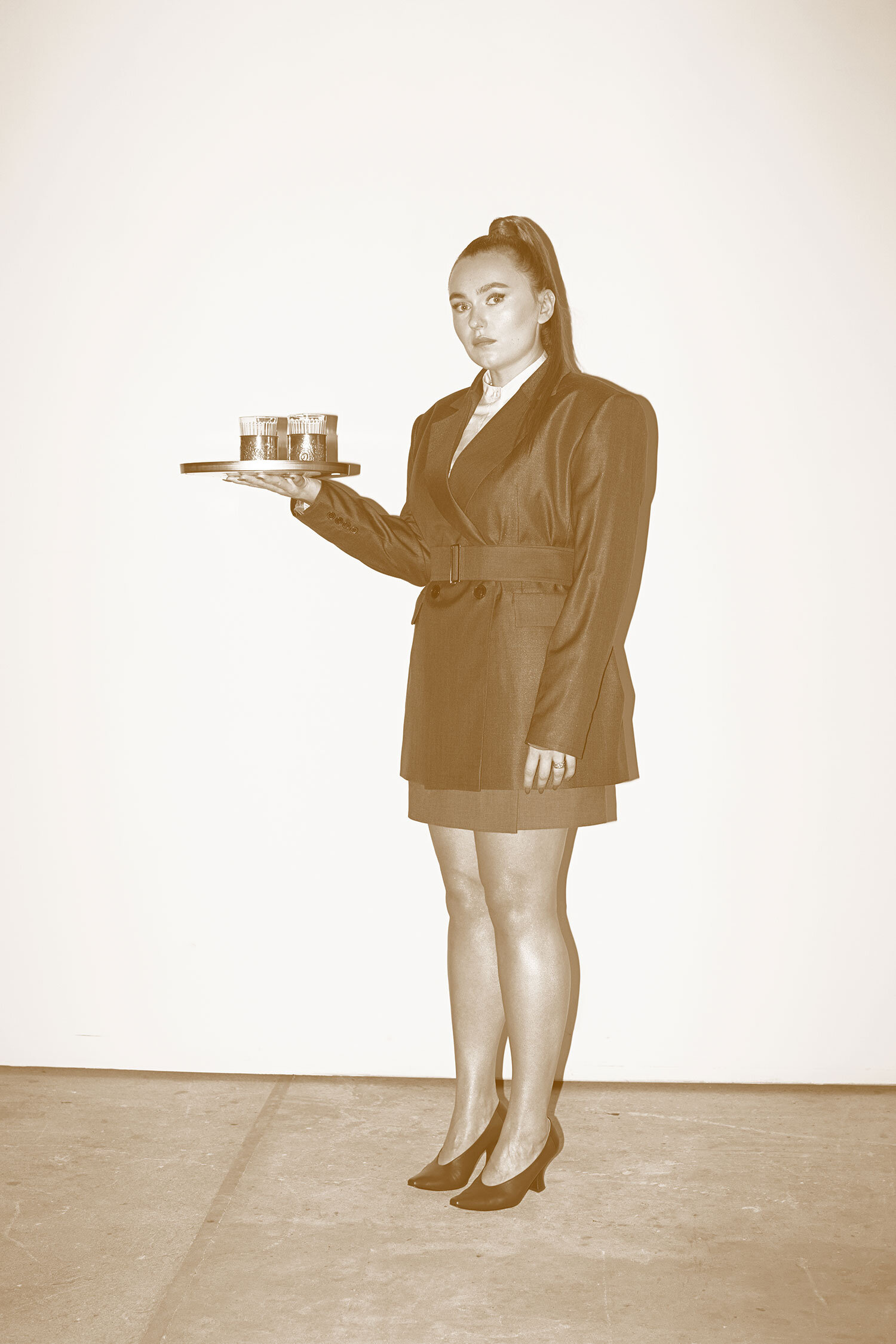Julie Poly’s Ukrzaliznytsia
Meet photographer and artist Julie Poly who sees beauty in the trivial. She has just released her Ukrzaliznytsia project, a tactile rich photo essay book that takes the reader on a journey on Ukraine’s one and only railroad transportation enterprise. From the moment you pick up her book, removing it from it’s Ukrzaliznytsia branded packaging, holding the train ticket that was neatly stored in the inside cover, you enter a world of ‘provincial gigolos and leopard-clad ladies, rigorous businesswomen and young soldiers.’ Julie Poly spent a year making documentary and staged photos on her local trains, predominantly in Kyiv region, Eastern and Western parts of Ukraine, and the results are an incredibly rich collection of stories, where the boundaries between reality and fiction are blurred.
Words by Lila Theodoros. Photography by Julie Poly.
Ukrzaliznytsia feels part documentation, part creation. What inspired you to create the photo series and book?
First of all, the inspiration behind the Ukrzaliznytsia project is my personal experience, which consists of my own observations while travelling on the train and a summer internship as a train conductor. I studied at Ukrainian State Academy of Railway Transport and despite the fact that my major was in process control and customs control, every student had a chance to work on a train – and I was one of them. Ukrainian trains have an absolutely unique atmosphere. It only seems that they are just a means of transportation. But really the Ukrainian railway is a different world and everyone who gets on board sees it. As you have observed, Ukrzaliznytsia consists of documentary and staged photographs. I use a ‘pseudo-documentary’ approach for the staged photographs – the inspiration for them has come from real people and situations. The characters of the book represent typical passengers of the Ukrainian railway such as students, soldiers, business women, provincial gigolos, ladies in leopard garments. The still life photos are plain documentary. They show national trains with all their comforts. The interior of wagons can be different from each other. Conductors look after wagons as if they are their own homes – that’s why some of the wagons may have a specific decor – for instance, flowers on tables or pictures on the wall, red carpets and linoleum floors. All the characters and the interiors I saw while working as a conductor and on my family train trips inspired me to make a project that could fully present the uniqueness of travelling by Ukrainian trains. I think that the book is the best form to present the idea in a more full way. The first thing you see is the packaging of the book – it’s design was inspired by the bag of bedding you find on Ukrainian trains. Often a train journey begins with people preparing their seat in the wagon: they open the plastic bag that contains bed sheets and make their bunk. I wanted to recreate this process so that by opening up the packaging of the book, the readers would be prepared for the ‘journey’ that is about to begin in Ukrzaliznytsia.
Your subjects in the book are diverse, with the line between professional model and general passenger blurred. Does this mirror life on the actual Ukrzaliznytsia? Or is this your unique creation of this world?
While travelling by train in Ukraine, you can meet a lot of different types of people and characters. I wanted to depict the most common and most interesting for me among them. All the shoots were staged, but most of them we did on real trains – we bought tickets to different destinations and were shooting while travelling. The ‘passengers’ of my project were built on real people I saw or heard about on the trains. In the project I took people from street casting, actors, professional models and I even used Tinder to cast someone. Every person was chosen specifically for the character – the one that is the closest to the real personality of ‘model’. For example, the ‘stripper’ character is a pole dance champion and coach; the blonde fancy girl in pink, aka Barbie, is the former Miss Lviv. The characters and cast were picked this way to make staged photos look as natural as possible, I just portrayed them in my signature way. A lot of the photographs in the book have an erotic vibe. It comes from the specific atmosphere of travelling in some types of wagons of Ukrainian trains. Especially during summer, in the low cost cars, in which instead of regular seats there are beds/benches, people start to take off some of their clothes to feel less hot inside the wagon. Passengers dress in more comfortable clothes once they get in, change their shoes to slippers or lie barefoot, have dinner and a drink – all that in tight compartments. The notions of privacy and personal boundaries become blurred, and that’s what I also wanted to show in this project.
Your book flows beautifully through photo series, all prefaced with an almost abstract collection of stories, notes, letters, memories. How did you collect these stories? Are they real?
The project has both real and fictional stories, accompanied by an artistic, often poetic, text or riddle. Some of them are based on my experience, or on information told to me by someone. I decided to divide the book into 13 chapters – each of them has its own story and is devoted to a journey to a certain place. With the texts in the book the visual stories become more clear and complete to people from other countries.
What is one of the most amazing things or moments you have seen on Ukrzaliznytsia?
While shooting the Ukrzaliznytsia project there were some fun stories that happened. For instance, one of the most unusual shoots was an international wedding – the last story in the book. The fun started from the casting itself (the agent of international models didn’t speak Russian well, and in addition messed up the names – we bought tickets for the wrong names that were different from the passports). And the shoot on the train caused a stir among passengers. Many thought that we really had a wedding – passengers tried to get involved in celebration, poured cognac and congratulated the ‘newlyweds’.
I am an outsider, living in Australia, with Eastern European heritage. The beauty documented in your book feels like a life that could have been mine. It mirrors blurry memories of my Grandmother and what her life looked like to seven-year-old me. How does the story of your work in Ukrzaliznytsia reflect the life and people of Ukraine?
Pretty much every character has something drawn from my personal background. For instance, I used to do makeup with blue eyeshadow and wear leopard prints and my mother always packed food for me for the train. So, Ukrzaliznytsia has a lot of self-irony in it. For example, the tradition to bring food on the train is reflected in the book. In terms of passengers and models that reflect them – same situation. Half naked men in hot airless compartments, people going on business, sellers with huge bags packed with products – they all are among passengers. But as I said before, I wanted to show them in a grotesque and ironic way, hoping that everyone could recognise themselves in some of the characters and smile.
Tell me about your creative community.
In different periods of my life I was a part of different communities: photo clubs, art classes, school of contemporary art. At this point my community is very wide and consists of different people from all sorts of creative fields.
Describe a day in the life of Julie Poly.
The way my day goes really depends on the phase I’m in: active shootings or research. If I’m in a research phase I spend the day making moodboards, casting, looking for info. If I’m in a shooting phase I spend most of the day on location working. Something I do on a regular basis is a morning run with my poodle, business meetings and meetings with my friends.
Your photography is provocative and intimate, but never feels exploitative. Through your subjects, your stories, you create an equally liberating and powerful female gaze. As a photographer, are you conscious of the power of the gaze in your industry? And how do you approach the way you direct our gaze in your work?
Thank you for noticing this! I really don’t exploit any kind of subjects. I just think that it’s very important for everyone to have a position, opinion and show it, communicate it through different ways that are possible for you. This way you can change something, influence society and the environment you live in. Change comes when people demonstrate and share their perspectives and vision.
What inspires you?
I am inspired by trivial things, everyday life, stories from the lives of friends and my own experience.
What exciting projects do you have planned for the future?
At this point there are a few upcoming projects – one of them is a magazine dedicated to erotica in Ukraine and the other one is still in development so I can’t share the details yet.



